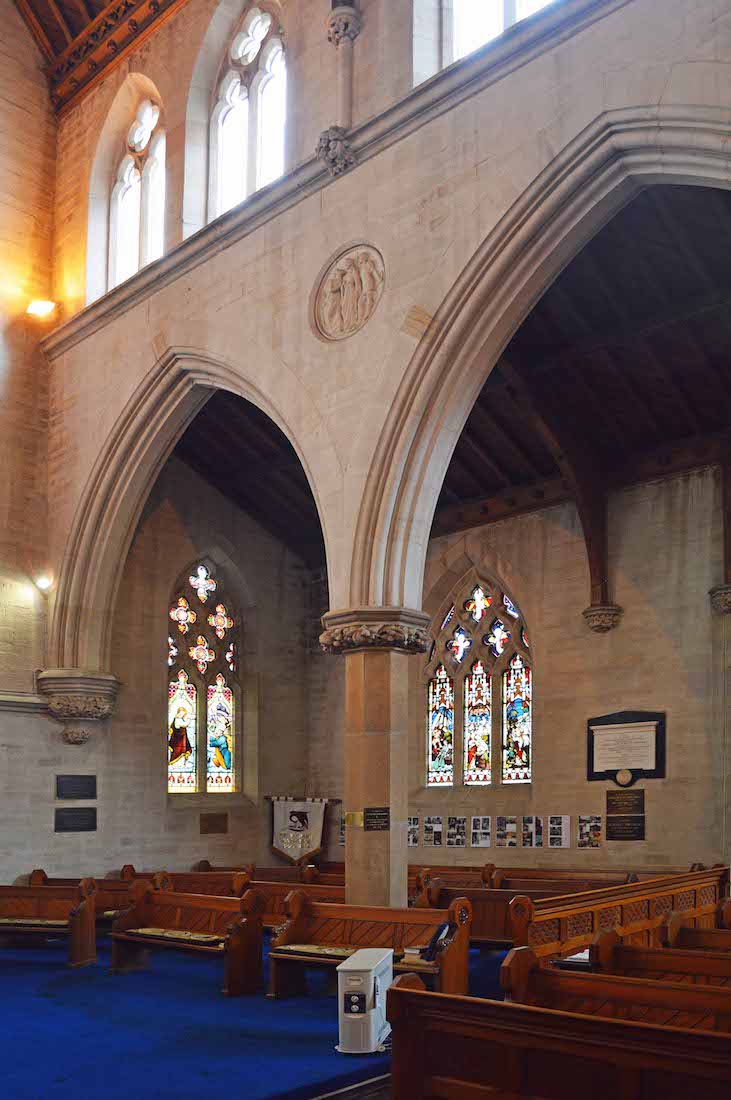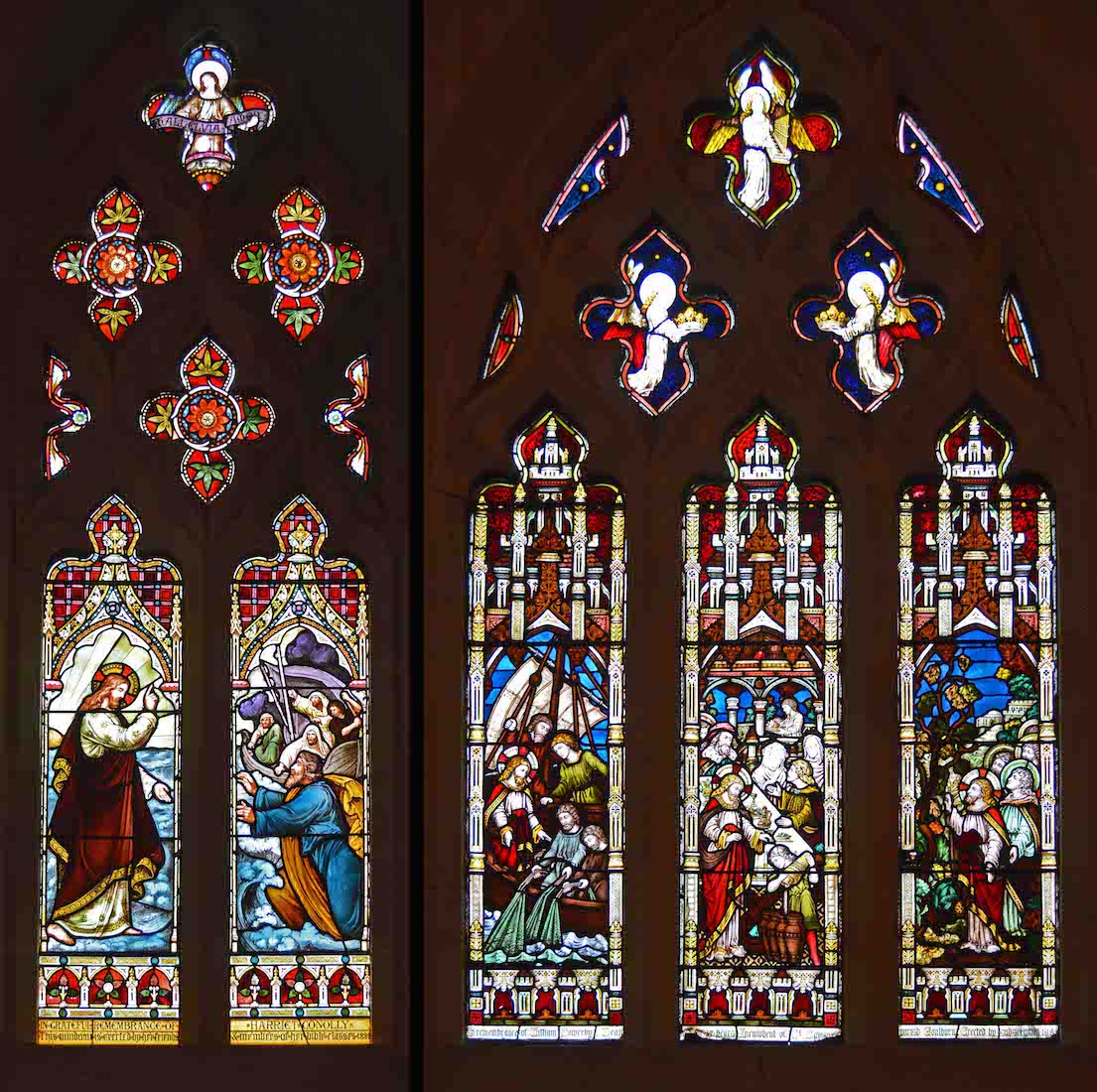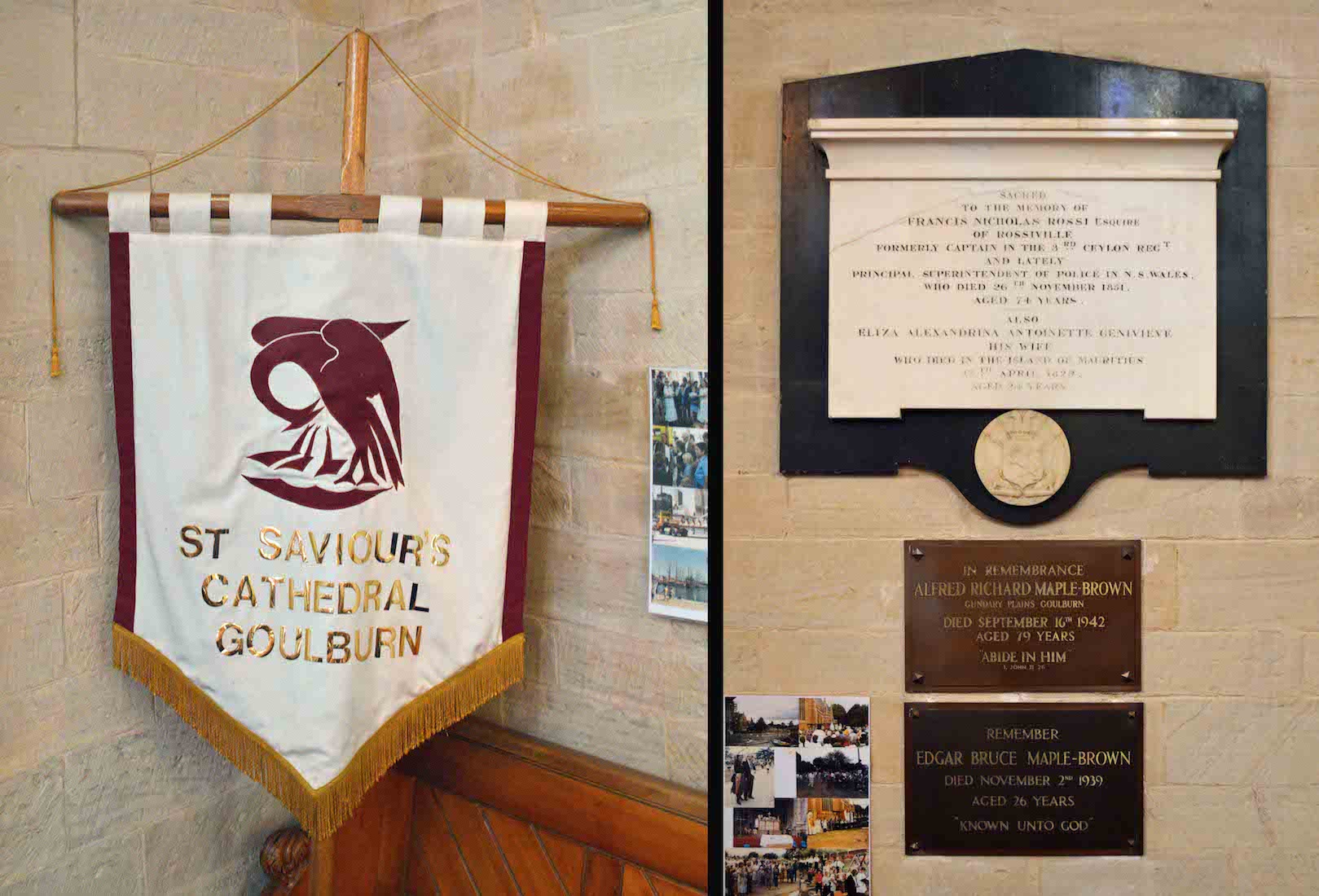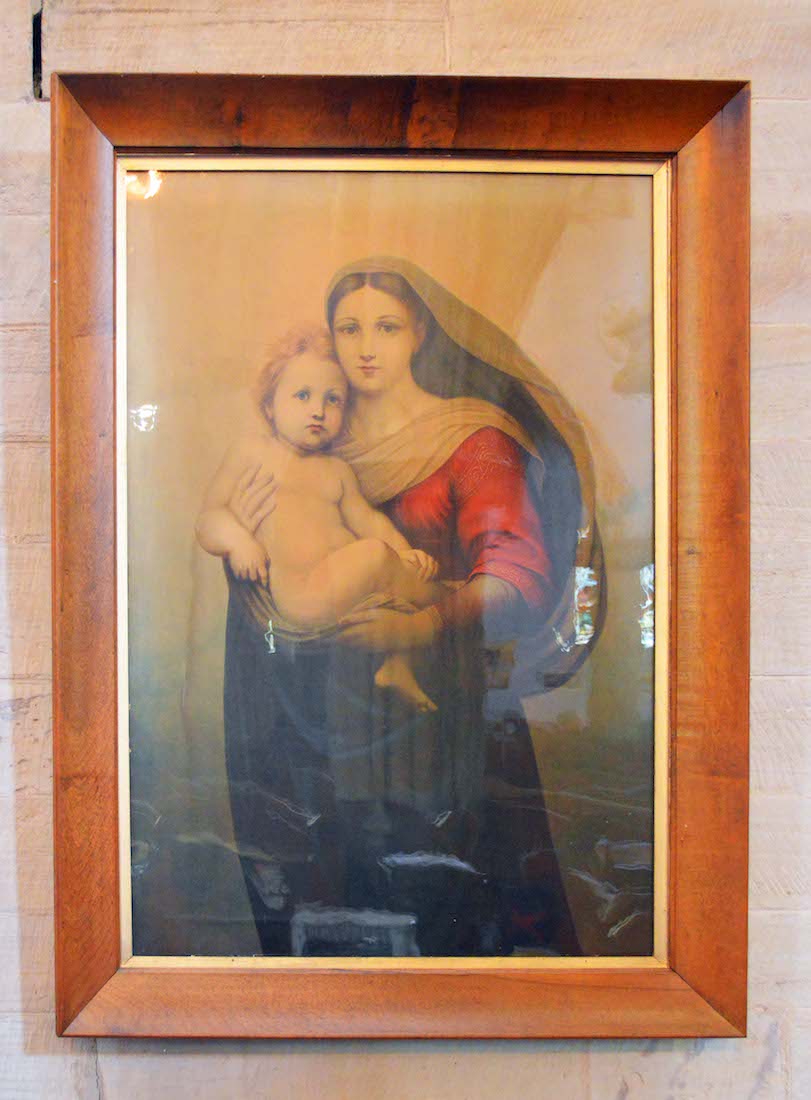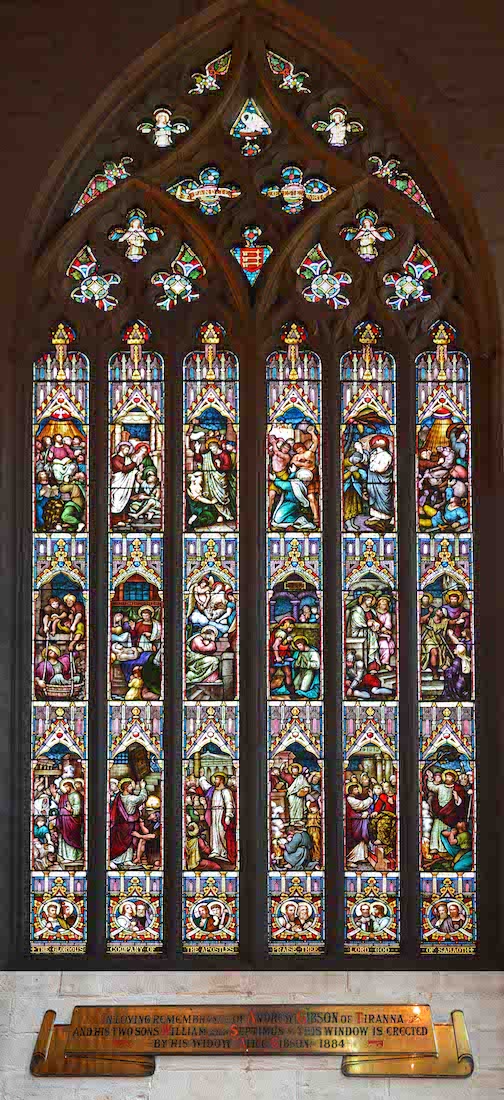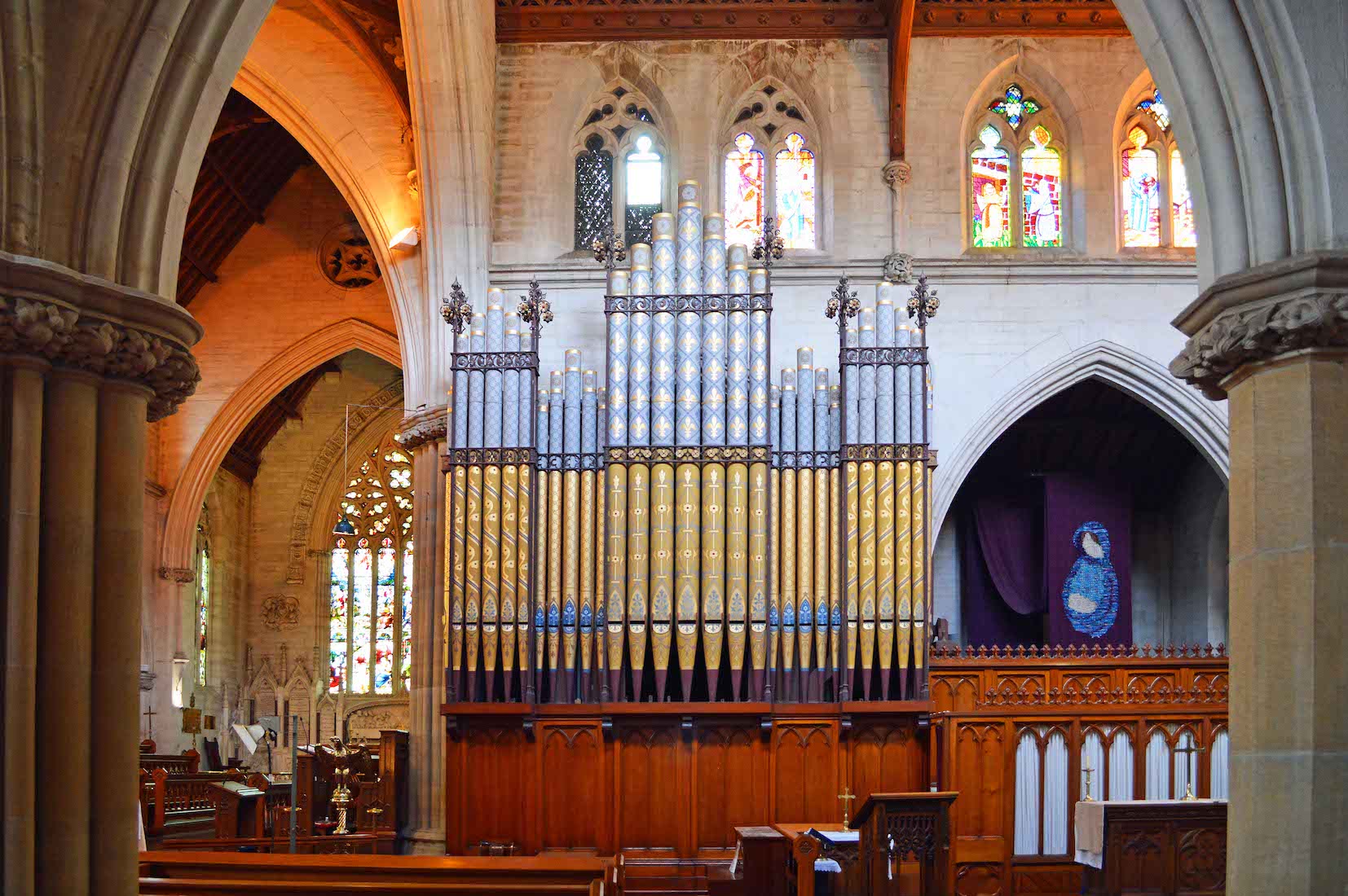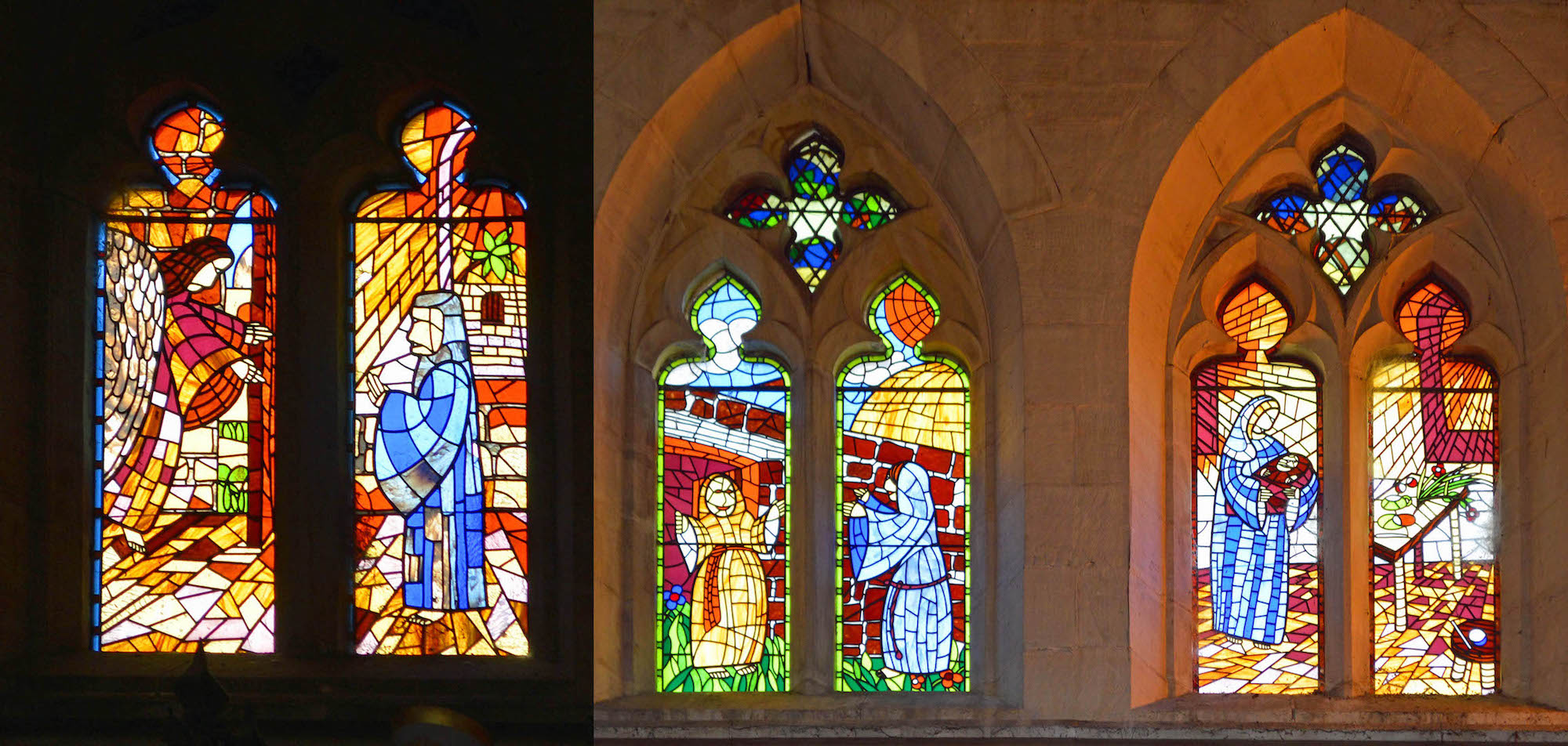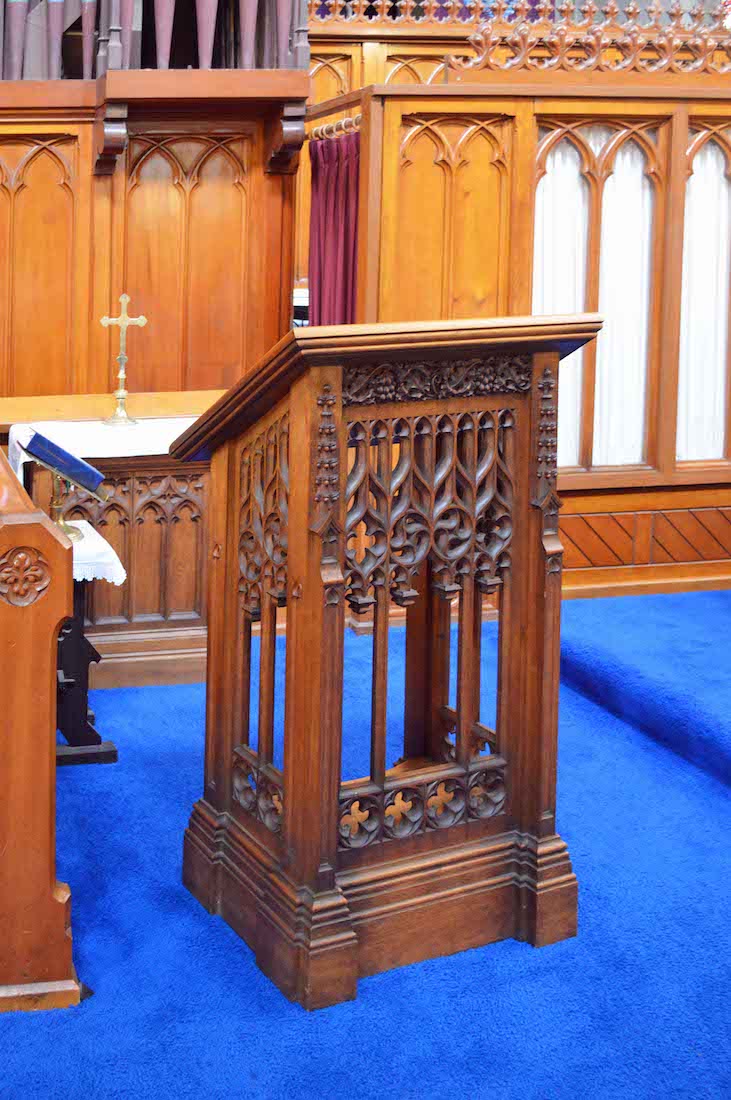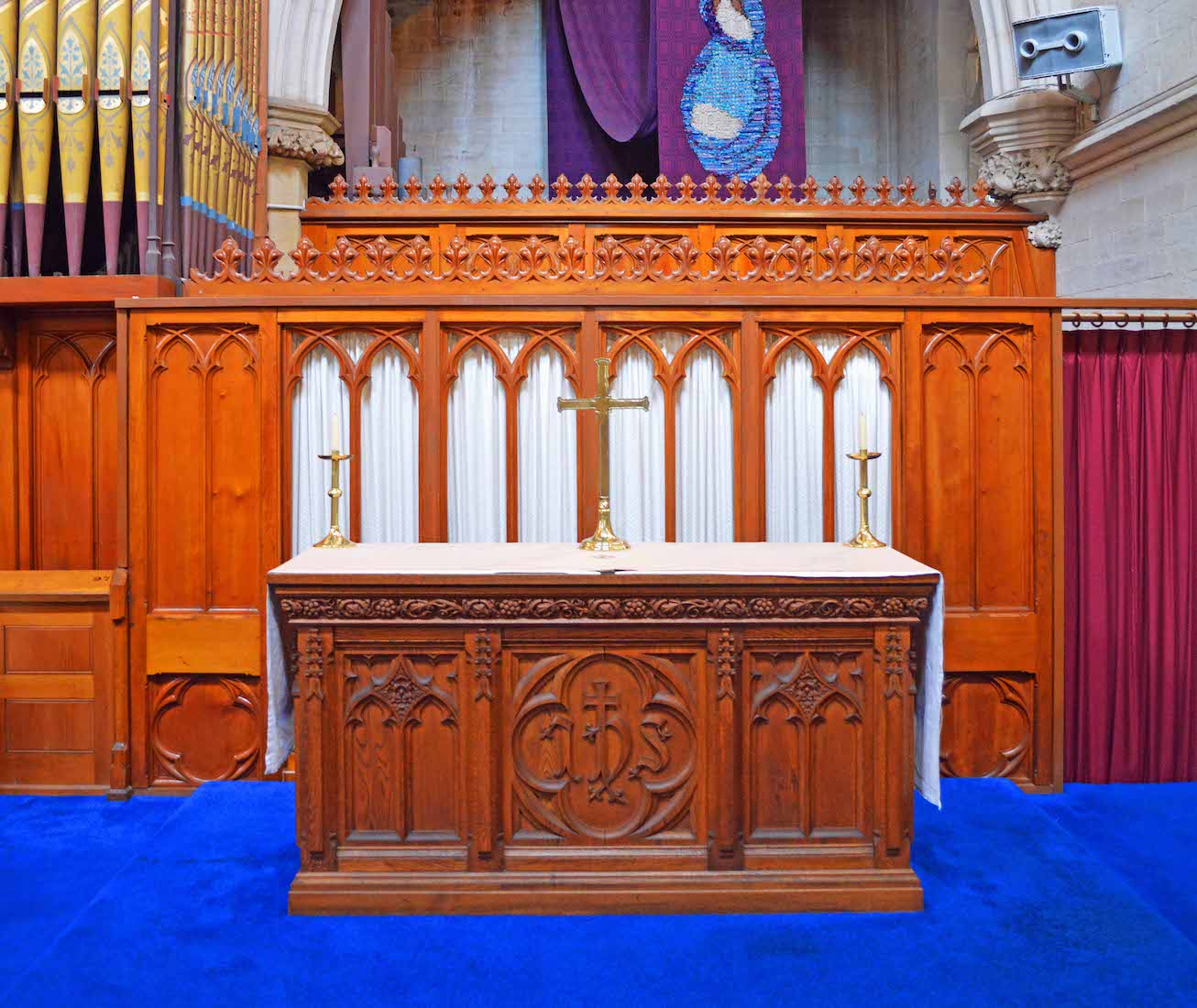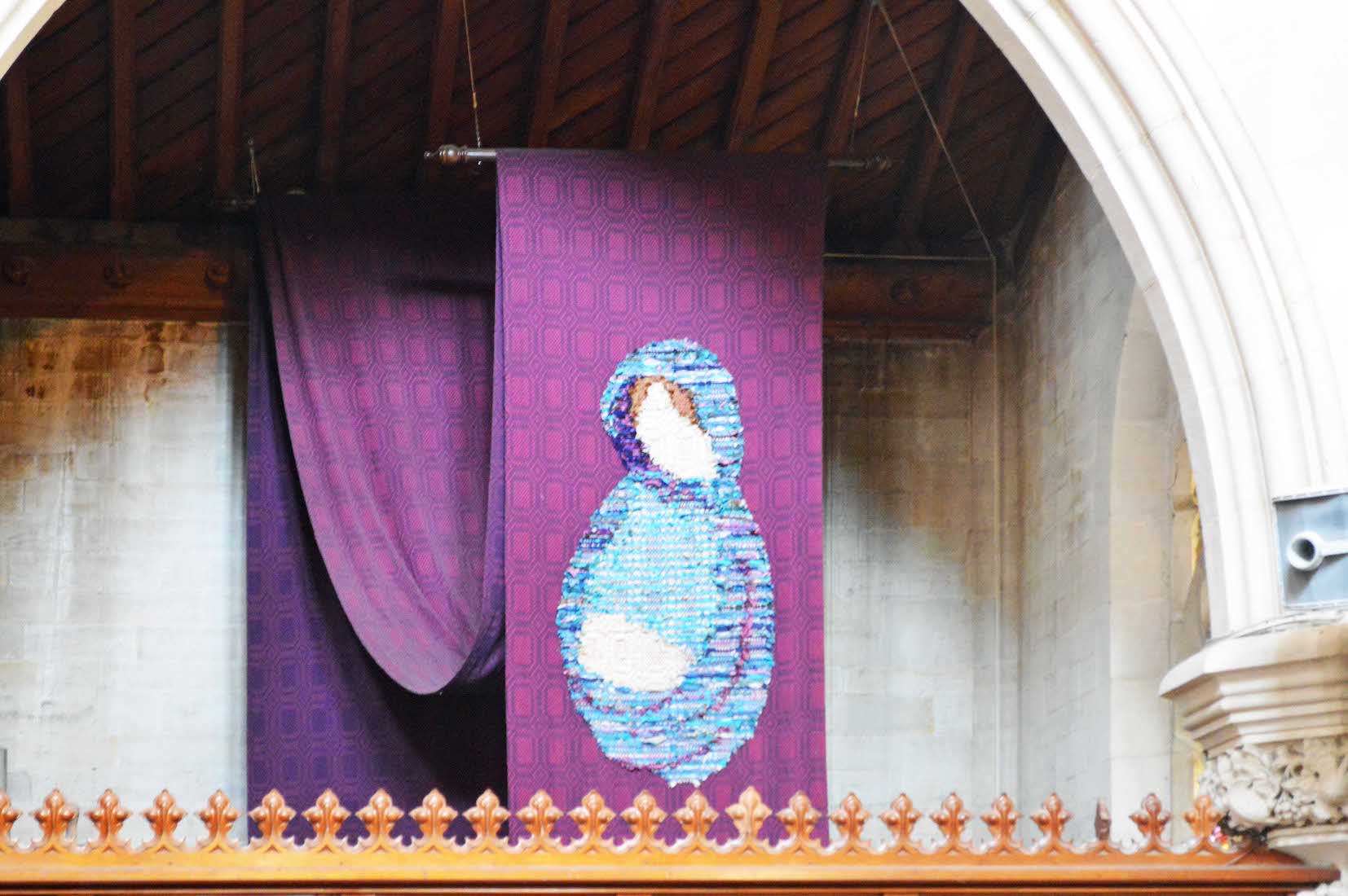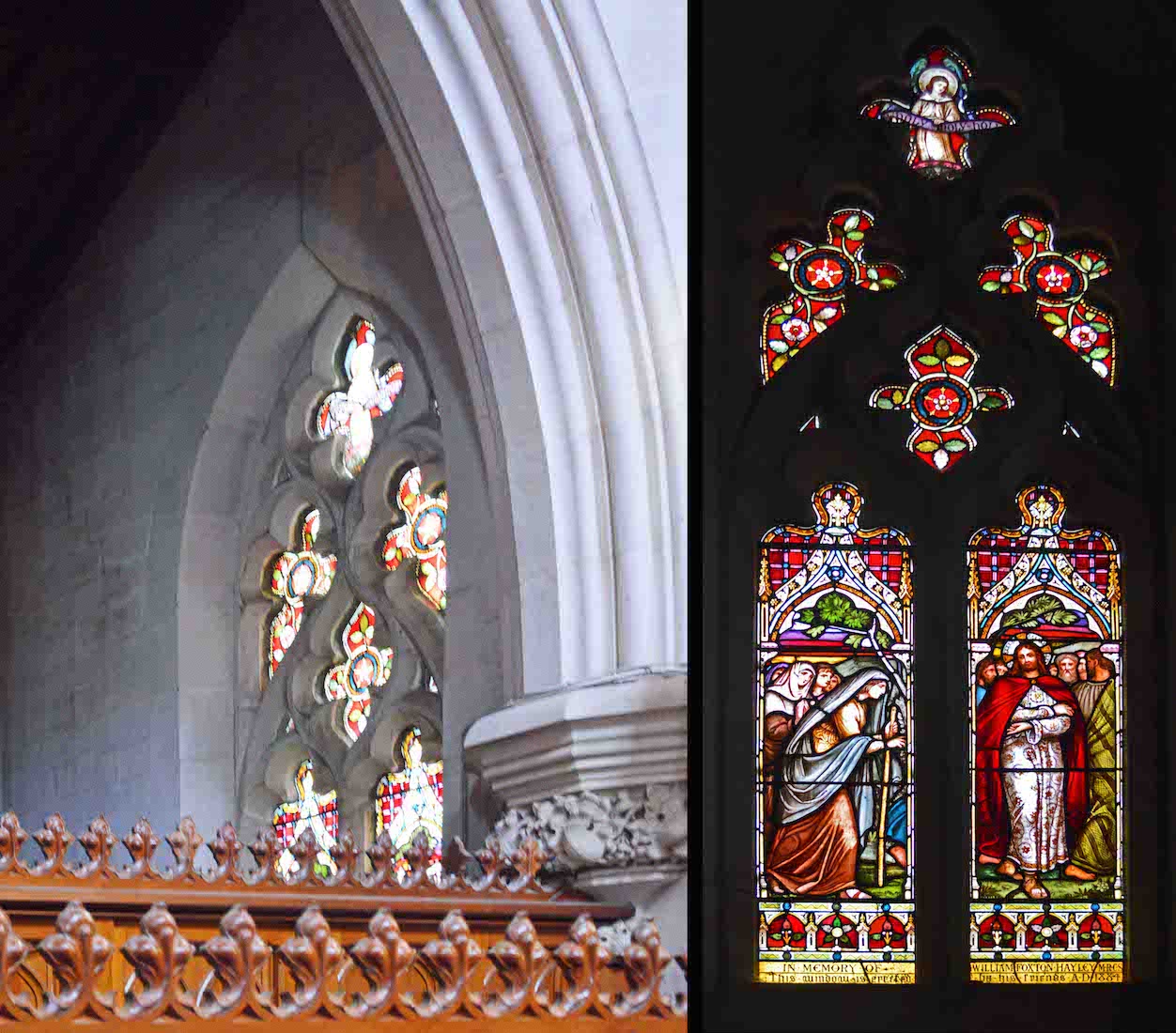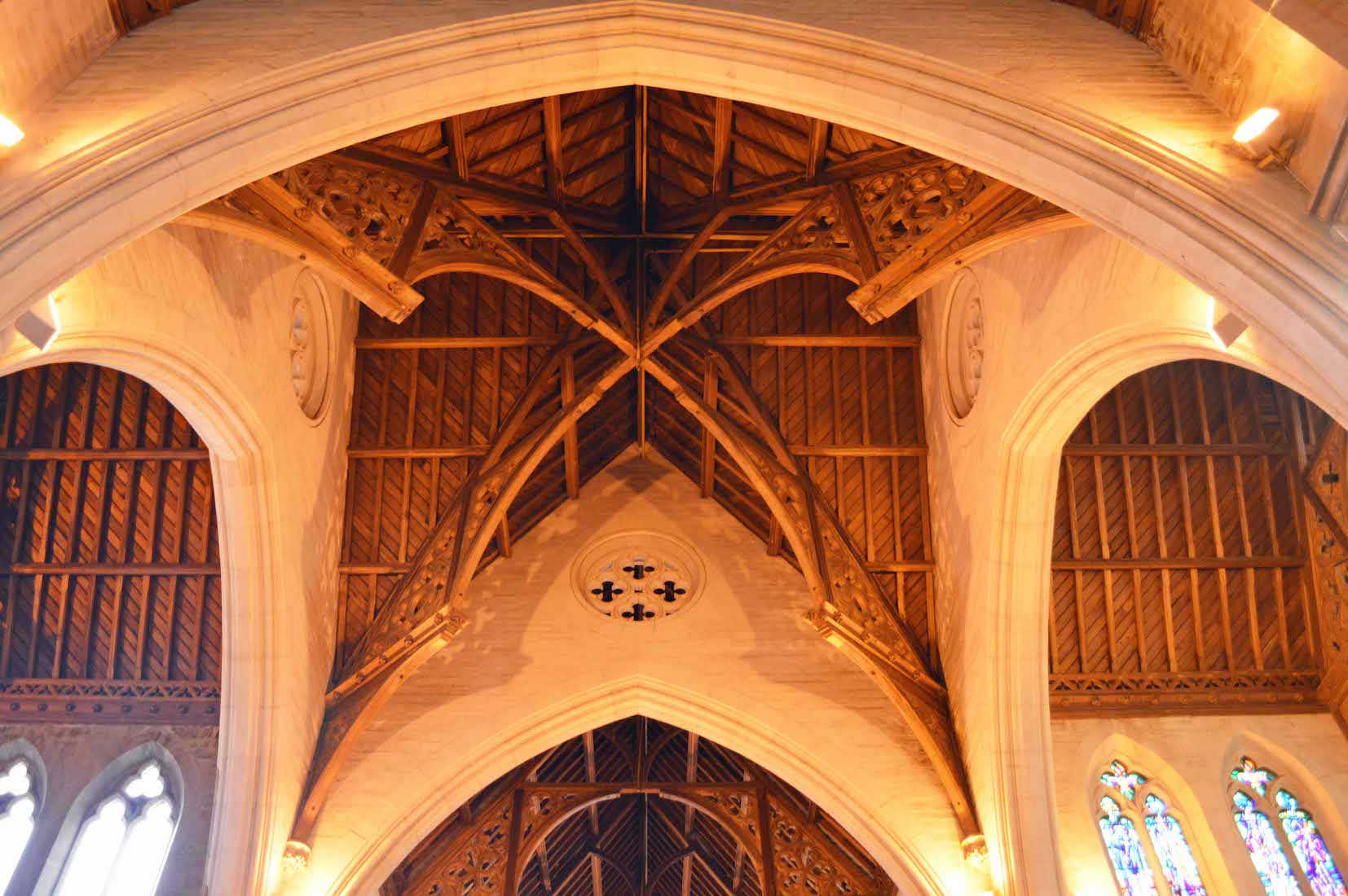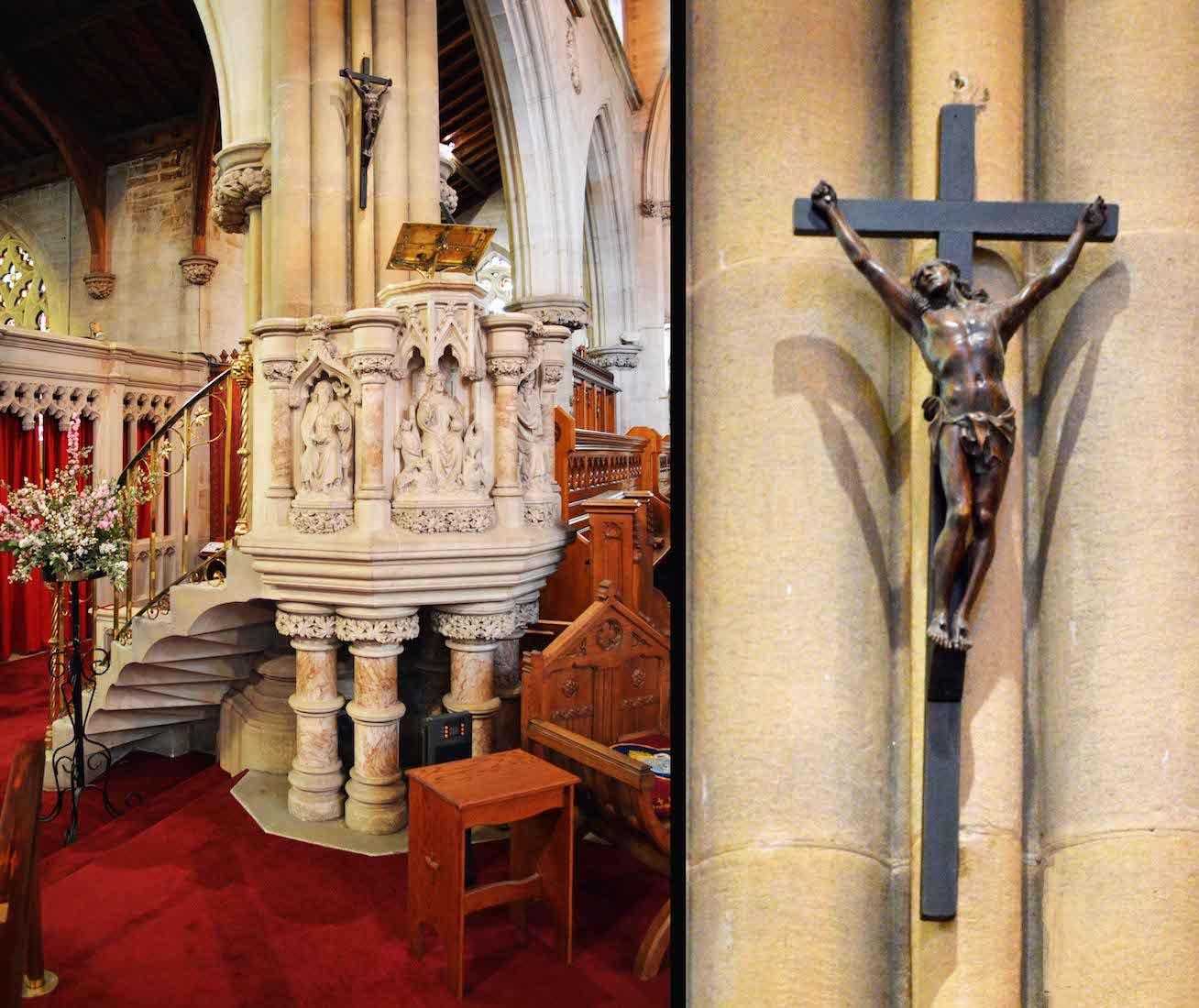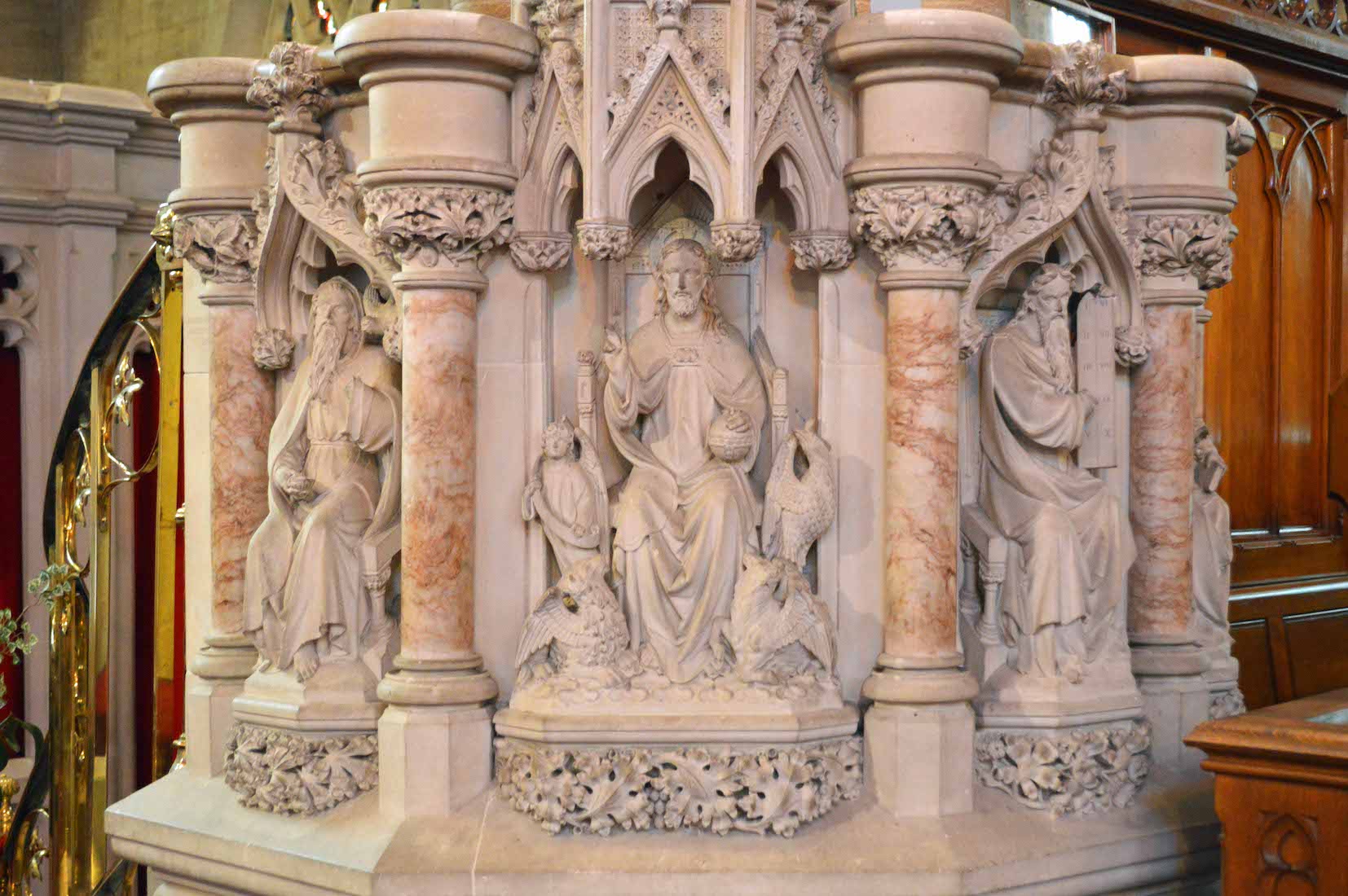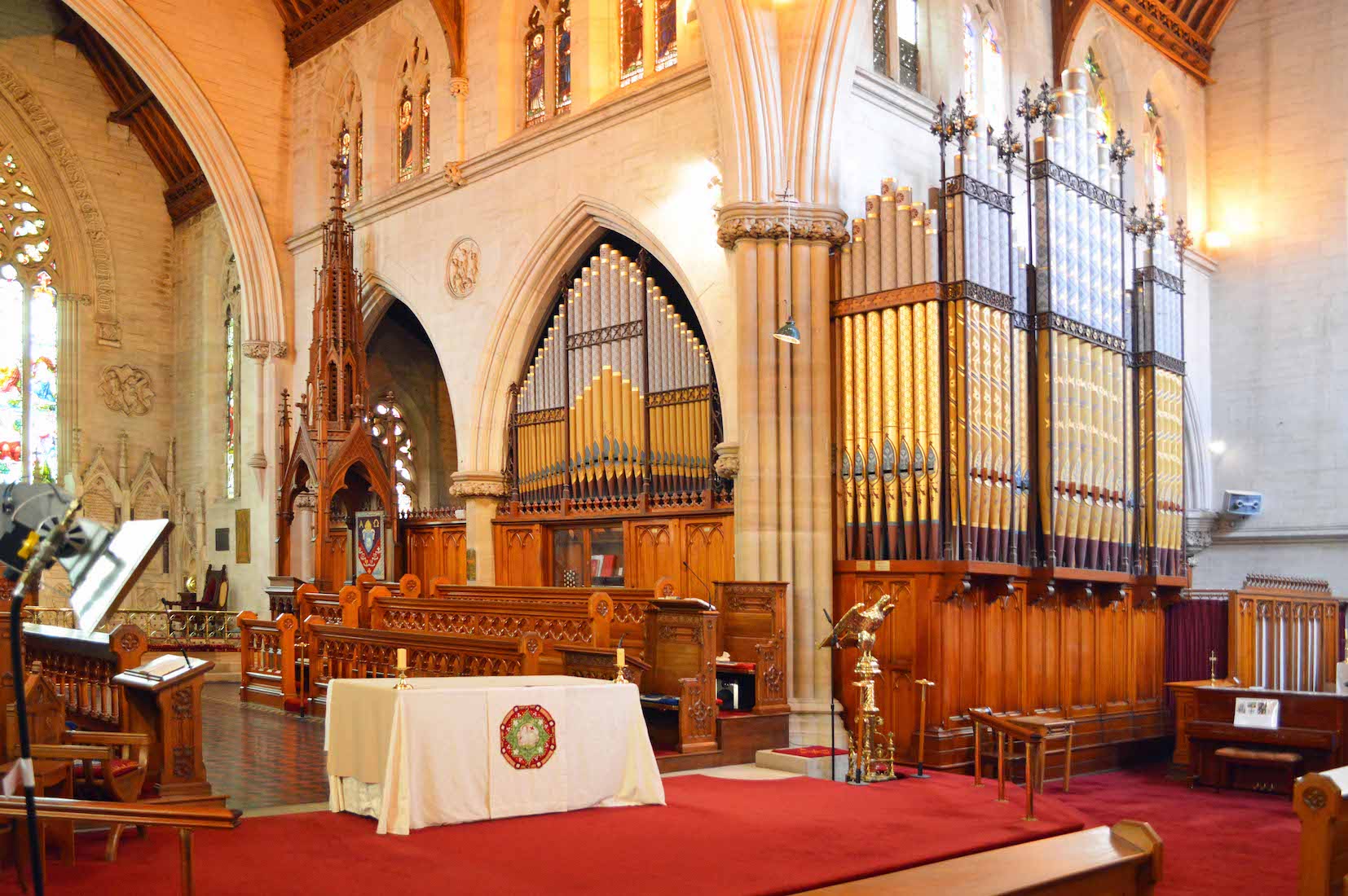81. BISHOP MESAC THOMAS CHAPEL
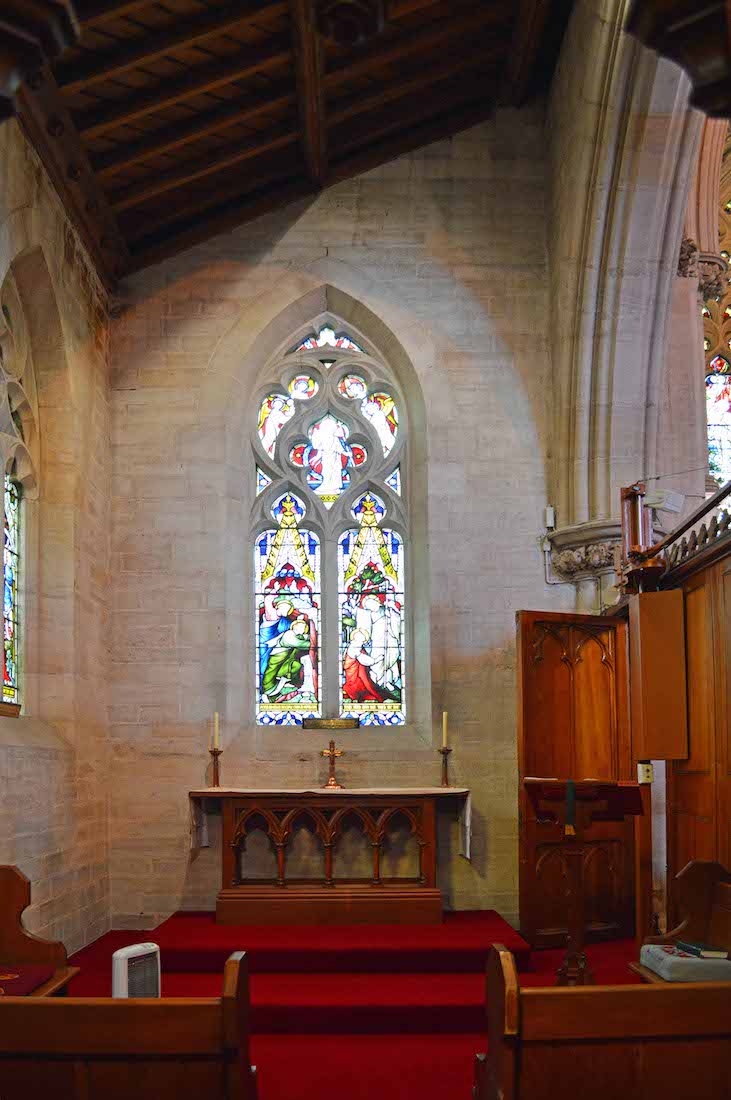
This little Chapel sits just North of the chancel. Its main features are a simple altar, and two stained glass windows. PLAN
82. THOMAS CHAPEL WINDOWS
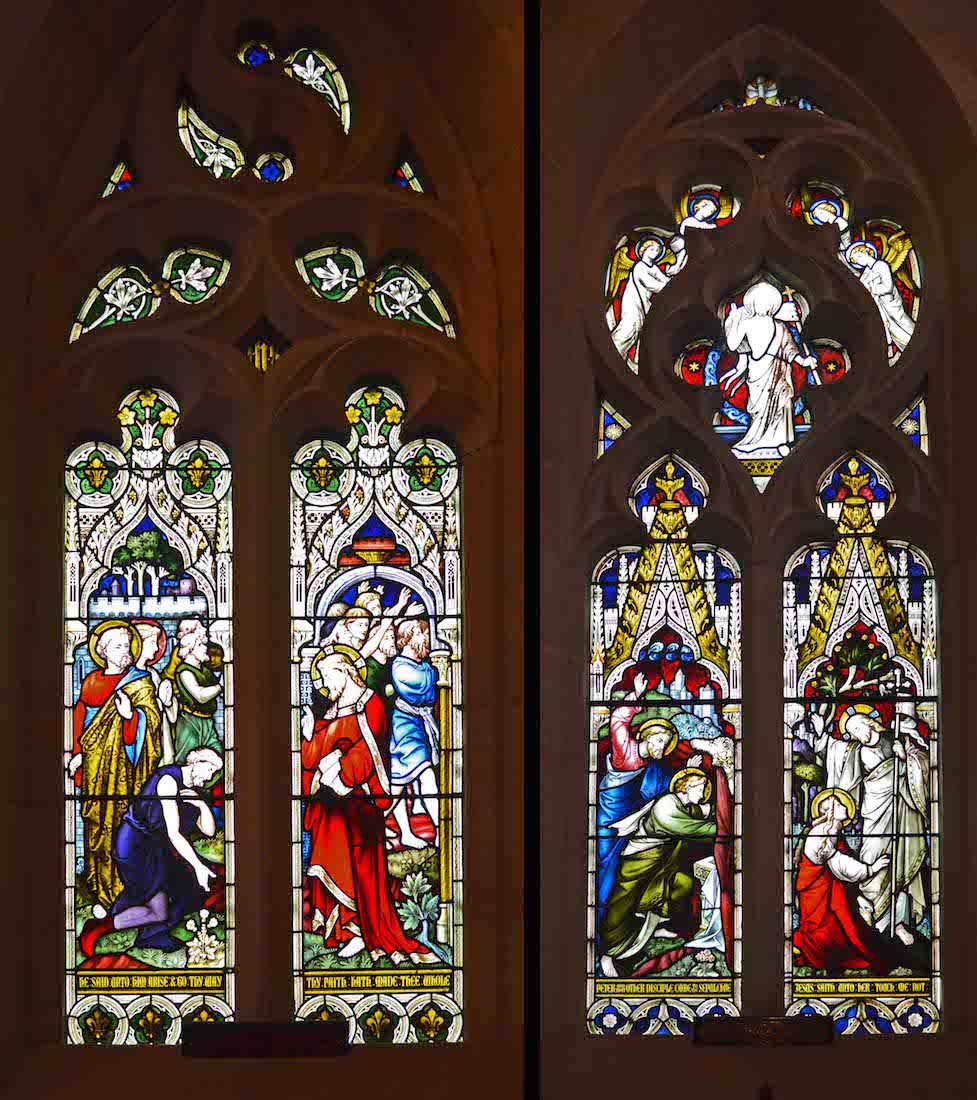
The North window shows Jesus speaking to the one leper who returned to give thanks for his healing. The East window shows Peter and the other disciples coming to the sepulchre and encountering the Risen Christ.
83. THOMAS CHAPEL ALTAR
The Thomas Chapel altar is simple in form, and carries a cross and two candlesticks. The brass plate tells us that the window was given by Bishop Thomas of Goulburn in the name of his loved wife Mary Thomas.
85. SOUTH TRANSEPT WINDOWS
The South window shows Jesus walking on the water and Peter rushing to meet him. The West window shows three scenes from Jesus’ life: the pulling in of a multitude of fish, turning water into wine, and the curse of the fig tree. Although the lights of the Cathedral windows have a pleasant uniformity, there are some curious variations in the total window structure.
87. PLAQUES
There are various other plaques as we continue to explore the walls of the South transept. Here we have brief summations of the lives of Cathedral parishioners: a flour miller, a young 20-year-old who died in NZ, an architect, and a devoted Cathedral worker.
88. ICON
Near the middle of the South wall of this transept is this icon. This icon was created by 72 year old Egyptian Victor Youseff. Victor is a Coptic Christian who had to flee his country. The Virgin and Child theme is a common subject for iconographers.
89. PAINTING
Also on the South wall of this transept we find this painting of Madonna and Child.
90. SOUTH TRANSEPT WINDOW
The large South transept window was given in memory of Andrew Gibson and his two sons. Like the North transept window, it contains 18 scenes – but here from the life of Christ. The text along the base reads: The Glorious Company of the Apostles Praise the Lord God of Sabaoth.
91. SOUTH TRANSEPT EAST
On the Eastern side of this transept are the organ pipes alongside the lectern, altar and drape of the Our Lady Chapel. Above are the clerestory windows.
92. CLERESTORY WINDOWS
Again there is a strange disparity in the design of these windows ... . From left the windows show the Annunciation with the angel speaking to Mary, the meeting of Mary with her cousin Elizabeth, and Mary with Jesus after the birth.
94. LADY CHAPEL ALTAR
Next to the lectern is this carved altar. On the altar stand a cross and two candles, and the front panel bears the letters IHS – the first letters of the name ‘Jesus’ in Latinized Greek. Behind is a purple and blue drape.
95. LADY CHAPEL DRAPE
This purple drape bearing an image of Mary with her baby is an effective addition to the Lady Chapel. Our guide told us that the drape also covers some unsightly pipes, but I did not verify this!
96. DRAPE ROOM WINDOW
The room that houses the drape is just a store room, but it does have its own stained glass window. This window in memory of William Foxton Hayley shows ... ?
97. CROSSING ROOF
In our exploration of this lovely Cathedral we next come to the chancel and the sanctuary. Above the crossing is this delicate roof structure.
99. PULPIT DETAIL
The pulpit shows the glorified Christ at the centre, with Moses at right and Elijah at left, representing the law and the prohets. The side arches are in a style found elsewhere in the Cathedral.
100. ORGAN
The organ was built in 1884 by Forster & Andrews of Hull and was originally placed in the West gallery. In 1902 the organ was moved from the gallery to its present position in the chancel end of the south aisle, where it was reconfigured and provided with tubular-pneumatic action. Restored in 1978-9 by Brown and Arkley, the action was changed to electro-pneumatic. .



